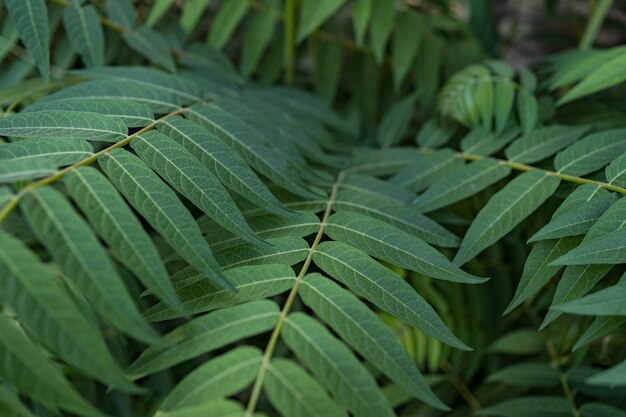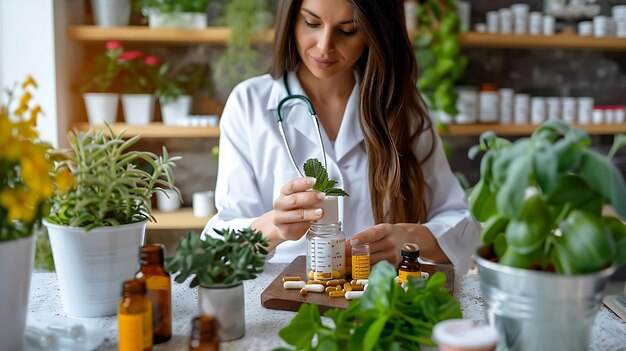अभी हमारे स्टोर में खरीदें
Ayurveda for Seborrheic Dermatitis: A Holistic Approach

Seborrheic dermatitis—often manifesting as red, flaky patches on the scalp or other oily skin regions—can be an uncomfortable, sometimes chronic condition. What if there was a holistic, centuries-old approach that could potentially bring relief? Enter Ayurveda, a traditional system of medicine from India that offers unique insights into balancing the body, mind, and spirit. This article delves into how Ayurveda’s foundational principles may help manage seborrheic dermatitis, backed by scientific research, reputable medical guidelines, and practical applications.
Table of Contents
- Understanding Seborrheic Dermatitis: A Brief Overview
- Ayurvedic Principles and Their Relevance to Skin Health
- Scientific Evidence on Ayurveda for Seborrheic Dermatitis
- Common Ayurvedic Remedies and Their Proposed Mechanisms
- Practical Tips for Integrating Ayurveda Into Your Routine
- Precautions, Risks, and Expert Advice
- Frequently Asked Questions (FAQ)
- Conclusion: Ayurveda for Seborrheic Dermatitis
Understanding Seborrheic Dermatitis: A Brief Overview
Seborrheic dermatitis is a common inflammatory skin condition often presenting with:
- Flaky or scaly patches on the scalp, eyebrows, or behind the ears
- Redness or irritation
- Itchiness and discomfort
- Greasy appearance or yellowish scales
According to the American Academy of Dermatology, seborrheic dermatitis is linked to an overgrowth of a yeast-like fungus called Malassezia on the skin, as well as an inflammatory response that may be partially influenced by immune system factors. Typical treatment protocols include medicated shampoos, topical corticosteroids, and antifungal creams. However, many patients seek complementary approaches, such as Ayurveda, to address both acute symptoms and potential underlying imbalances.
Ayurvedic Principles and Their Relevance to Skin Health
Ayurveda, recognized by the World Health Organization as a traditional system of medicine, revolves around the concept of balancing three fundamental energies known as doshas—Vata, Pitta, and Kapha. Each dosha corresponds to specific bodily functions and tendencies:
- Vata (Air and Space) – Governs movement, circulation, and the nervous system.
- Pitta (Fire and Water) – Regulates metabolism, digestion, and body temperature.
- Kapha (Earth and Water) – Maintains structure, lubrication, and stability in the body.
When these doshas are out of balance, Ayurvedic theory suggests various health issues, including skin conditions, can arise. For seborrheic dermatitis—especially when it involves greasy scales, redness, and inflammation—an imbalance of Pitta (inflammation) and Kapha (excess oil) is often implicated in Ayurvedic literature.
Ayurveda and Skin Health
- Detoxification: Ayurveda emphasizes the removal of toxins or “ama” that can accumulate in the body and manifest as skin disorders.
- Dietary Management: Specific foods are believed to either calm or aggravate the doshas, influencing conditions like seborrheic dermatitis.
- Herbal Formulations: Ayurvedic texts describe numerous herbs with anti-inflammatory and antifungal properties, potentially beneficial for soothing irritated skin.
While these perspectives have yet to be fully validated by modern clinical trials, preliminary research shows promise for certain Ayurvedic formulations.
Scientific Evidence on Ayurveda for Seborrheic Dermatitis
When it comes to Ayurveda for seborrheic dermatitis, scientific evaluations are somewhat limited compared to conventional medicine. However, there are emerging studies and peer-reviewed articles that highlight the following points:
-
Antifungal and Anti-inflammatory Properties
- A 2019 review in the journal Evidence-Based Complementary and Alternative Medicine noted that herbs such as Neem (Azadirachta indica) and Turmeric (Curcuma longa) exhibit both antifungal and anti-inflammatory activities, which might help manage skin conditions like seborrheic dermatitis.
- PubMed indexes multiple studies indicating that Aloe vera has anti-inflammatory effects that can be beneficial for various dermatological conditions.
-
Role of Herbal Oils
- In a small-scale study published in the Journal of Ethnopharmacology, coconut oil demonstrated antifungal properties against strains of Malassezia.
- Tea tree oil, though not traditionally Ayurvedic but commonly used in holistic practices, has been studied for its potential in reducing dandruff and scaling. However, the synergy of Ayurvedic herbs in blended oil preparations is still an active area of research.
-
Dietary Recommendations
- Ayurvedic guidelines often recommend a Pitta-Kapha balancing diet—low in refined sugars, fermented foods, and excessively spicy or oily dishes—to reduce the internal heat and oiliness that might worsen seborrheic dermatitis. Modern dietary studies also suggest that high-sugar or high-processed-food diets can aggravate inflammatory skin conditions.
Important Note: While these findings are intriguing, most experts, including those at recognized institutions like the National Center for Complementary and Integrative Health (NCCIH), emphasize the need for more rigorous, large-scale clinical trials to firmly establish the efficacy and safety of Ayurveda for seborrheic dermatitis.
Common Ayurvedic Remedies and Their Proposed Mechanisms
Below is an overview of Ayurvedic ingredients and practices frequently cited for managing seborrheic dermatitis symptoms:
-
Neem (Azadirachta indica)
- Properties: Antifungal, antibacterial, and cooling.
- Possible Mechanism: May reduce scalp yeast populations and soothe inflammation.
- Usage: Often applied as a shampoo ingredient, oil, or paste.
-
Turmeric (Curcuma longa)
- Properties: Strong anti-inflammatory and antioxidant effects due to curcumin.
- Possible Mechanism: Helps modulate inflammatory pathways associated with skin irritation.
- Usage: Commonly found in oral supplements, pastes, or face packs. Always patch-test to avoid staining or irritation.
-
Aloe Vera
- Properties: Cooling, moisturizing, and anti-inflammatory.
- Possible Mechanism: Calms irritated skin and may hasten the healing of damaged tissue.
- Usage: Direct gel application or as an ingredient in creams and lotions.
-
Triphala
- Properties: A classic Ayurvedic formula combining three fruits (Amalaki, Bibhitaki, and Haritaki). Believed to detoxify the body.
- Possible Mechanism: May address underlying metabolic imbalances, though more research is needed for seborrheic dermatitis specifically.
- Usage: Often consumed orally or used in topical preparations.
-
Ayurvedic Oils (e.g., Brahmi oil, Coconut oil, Sesame oil)
- Properties: Vary based on the herb-infused oil—some soothe dryness, while others reduce fungal overgrowth.
- Possible Mechanism: Create a protective barrier, reduce inflammation, or have mild antifungal effects.
- Usage: Applied to the scalp in gentle massage routines.
Practical Tips for Integrating Ayurveda Into Your Routine
If you’re considering an Ayurvedic approach for seborrheic dermatitis, here are some guidelines:
-
Consult an Expert
- Before you start any herbal or dietary regimen, consult a qualified Ayurvedic practitioner or a healthcare provider knowledgeable about integrative medicine. This helps tailor your plan to your individual constitution (Prakriti) and ensure it doesn’t conflict with existing treatments.
-
Focus on a Balanced Diet
- Avoid overly spicy, oily, or sugary foods, as these may exacerbate Pitta-Kapha imbalance.
- Incorporate fresh fruits, vegetables, whole grains, and moderate amounts of cooling spices like coriander and fennel.
-
Gentle Scalp Care
- Try Neem-based shampoos or mild herbal formulations.
- For dryness or flaking, a light scalp massage with coconut oil can help, followed by a gentle rinse.
-
Stress Management
- Ayurvedic theory suggests mental stress can aggravate skin disorders. Practices like yoga, meditation, and pranayama (breathing exercises) may help maintain overall dosha balance.
-
Topical Applications
- Experiment cautiously with turmeric masks, aloe vera gels, or triphala-infused rinses—always do a patch test first to rule out any skin sensitivity.
-
Stay Hydrated and Get Adequate Sleep
- Adequate water intake is critical for eliminating toxins.
- Quality sleep supports the immune system and skin regeneration.
Precautions, Risks, and Expert Advice
While many Ayurvedic remedies are generally considered safe, several caveats are important:
-
Allergic Reactions
- Herbs like neem and turmeric may cause contact dermatitis in sensitive individuals. Always perform a patch test.
-
Drug Interactions
- If you’re on medications such as anticoagulants, beta-blockers, or immunosuppressants, consult your doctor before adding herbal supplements.
-
Regulatory Standards
- In many countries, Ayurvedic products are not regulated as strictly as prescription medications. Look for reputable brands that follow Good Manufacturing Practices (GMP).
-
Scientific Limitations
- Despite promising preliminary research, the lack of large-scale, randomized control trials means there is still uncertainty around the full efficacy of Ayurveda for seborrheic dermatitis.
Disclaimer: This article is for informational purposes only and does not replace professional medical advice. Always consult a dermatologist or qualified healthcare provider for personalized treatment.
Frequently Asked Questions (FAQ)
1. Can Ayurveda fully cure seborrheic dermatitis?
While some individuals report significant relief, there is no universally guaranteed “cure” for seborrheic dermatitis—either in Ayurveda or conventional medicine. A combination of lifestyle changes, topical remedies, and stress management can help control flare-ups.
2. Are Ayurvedic remedies safe for children with seborrheic dermatitis?
Children have sensitive skin, so it’s essential to consult a pediatrician and an Ayurvedic practitioner before trying any herbal treatments or dietary modifications.
3. How long does it take to see results with Ayurvedic remedies?
Response times vary. Some people notice improvements within a few weeks, while others require several months of consistent application and dietary changes.
4. Is it necessary to follow a strict Ayurvedic diet?
A strict diet may benefit some but is not always mandatory. Prioritizing balanced meals, avoiding triggers like excessive sugar or oil, and focusing on fresh, whole foods can help reduce flare-ups.
5. Can I combine Ayurveda with my prescription treatments?
Yes, but you should do so under medical supervision to avoid potential drug-herb interactions and ensure comprehensive care.
Conclusion: Ayurveda for Seborrheic Dermatitis
In the quest for effective relief from seborrheic dermatitis, Ayurveda provides a holistic lens—focusing not merely on symptoms but on overall balance. Emerging evidence suggests certain Ayurvedic herbs and practices may offer antifungal, anti-inflammatory, and immune-modulating benefits. However, it’s crucial to remember that most of these findings need more robust clinical validation.
If you’re considering Ayurveda for seborrheic dermatitis, consult healthcare professionals—both in conventional and Ayurvedic fields—to craft a balanced approach. By combining scientific rigor with time-honored wisdom, you could find a personalized regimen that supports healthier skin and a more harmonious lifestyle.
Call to Action
Found this article helpful? Share it with friends or family members who might benefit from a holistic perspective on managing seborrheic dermatitis. Leave a comment below with your experiences or subscribe to our newsletter for more insights on integrative health and wellness. Always remember: your journey to better skin health can be enriched by exploring various therapeutic avenues, but professional guidance is key to safety and efficacy.
यह लेख वर्तमान योग्य विशेषज्ञों द्वारा जाँचा गया है Dr. Harsha Joy और इसे साइट के उपयोगकर्ताओं के लिए सूचना का एक विश्वसनीय स्रोत माना जा सकता है।
कोई और प्रश्न हैं?
आयुर्वेदिक डॉक्टर से एक प्रश्न पूछें और मुफ़्त या सशुल्क मोड में अपनी चिंता की समस्या पर ऑनलाइन परामर्श प्राप्त करें।
2,000 से अधिक अनुभवी डॉक्टर हमारी साइट पर काम करते हैं और आपके प्रश्नों की प्रतीक्षा करते हैं और प्रतिदिन उपयोगकर्ताओं को उनकी स्वास्थ्य समस्याओं को हल करने में मदद करते हैं।




